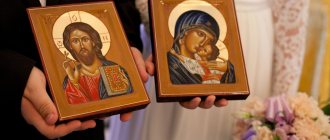Matchmaking scenario on the part of the groom - the move must be thought out
In any case, the program should be extremely interesting. A good matchmaking scenario on the part of the groom includes interesting, witty toasts, congratulations, songs, and competitions. The main thing is to think everything through carefully. This will help the young man and his “team” not to get into trouble and to show off their subtle sense of humor, eloquence and erudition among future relatives.
What does matchmaking look like today?
What can be said about modern traditions? The matchmaking scenario on the part of the groom today is particularly dynamic. As a rule, on the day chosen by the young couple, at the exact time specified, the future spouse must come to the parents of his beloved girl. Naturally, he must be beautifully dressed and have flowers with him. The proposal to the bride is made in front of her parents. The groom must describe his feelings for their daughter before he asks for her hand in marriage. With the consent of the parents, the bride's hand is placed in the hand of the future son-in-law.
If the father-in-law and mother-in-law were unable to attend the matchmaking for some reason, the newlyweds also go to them. The groom must introduce her to his parents, and she must present the “second mother” with a bouquet of flowers.
Well, if a couple has been together for a long time, and everyone knows each other well, the celebration can be made especially fun and fiery, according to the traditions and customs of each family. By the way, not only relatives, but also friends and girlfriends of the newlyweds gather for such events.
In matchmaking - without a groom, or How weddings were managed in Polesie
“So is it really a wedding when the whole village didn’t have a party at it,” says the grandmother about the current restaurant celebrations, where, as a rule, the closest relatives take part. Previously, the whole clan was invited.
Matchmaking
Matchmaking was considered the beginning of the wedding ceremony. As a rule, in most cases godparents acted as matchmakers. The natural parents remained at home. And in some villages, for example, in the Krasnovolskaya side, the groom himself did not go to matchmaking and stayed at home. In fact, the bride-to-be might not even know who she was marrying. One of the parents' aunts acted as the main matchmaker. When they went to matchmakers, they carried with them bread wrapped in a handbrake. But in most cases, matchmakers did not put vodka on the table. If the bride agreed to get married, the matchmakers exchanged bread with the bride's parents.
"Binges"
“Binge drinking” comes from the word “sing,” and not “drink,” as many now think. They meant final consent to marriage, which is why many songs were sung.
At this stage of the wedding ceremony, more guests gathered: the newlyweds, godparents, brothers and sisters of the newlyweds, their uncles and aunts. And if you consider that families had 10 children, the “binges” were quite crowded.
hen-party
The custom of gathering friends on the evening before the wedding has been going on for a long time. True, over time the form of holding a bachelorette party has changed. In the old days, by this time they tried to settle all the troubles of preparing for the wedding. In the bride’s house, her friends wove a wreath for the bride, and in some places they helped her try on a new dress made for the wedding. It was believed that at a wedding the bride should wear everything new; leather ankle boots were purchased for her for this celebration.
And the groom wore boots on his wedding day. In some cases, those in which his father and even grandfather married.
The wedding itself
Our grandparents attended weddings from three days to a week. Depending on the financial situation of the family. All relatives were invited, even not very close ones.
Instead of a registry office there is a church and a wedding ceremony. From the temple we drove to the bride's house. They had dinner there, and the groom returned to his home, leaving the bride. As a rule, the wedding was celebrated in two houses. Later, the groom returned for the young woman and took her to his place.
As for the feast itself, it was considered indecent to refuse drinks to guests. So they “took” all the bitterness of family life for themselves. But the newlyweds were allowed to drink only sweet kvass, they were not allowed any alcohol.
The wedding night
Soon after the loaf was distributed, the young people were sent to bed. To a separate hut or cage, if any. The bed was made by matchmakers; in some localities this was done by the bride herself. In the bedroom, the young woman took off her husband’s boots as a sign of submission to him. The wedding guests continued to walk.
If the bride did not lose her virginity before marriage, then the next day the groom's father carried a bottle of vodka tied with a red ribbon to the house of the bride's parents.
After the wedding
For 2-3 months, the relatives tried not to leave the young people alone. Every Sunday and on holidays they had to go to visit one of their relatives. This is how the young family was introduced into the circle of family relationships. They tried not to leave the newlyweds alone also because at the moment of getting used to each other, inexperienced spouses could often quarrel. In this way, relatives smoothed over the corners between the newlyweds. Although, in conditions where the spouses had to live under the same roof with the husband’s large family, the young daughter-in-law had to adapt more.
But during the period of such addiction, the newlyweds were forbidden to drink alcohol. Since the wedding day. This eliminated the possibility of a “drunken conception” of the first child.
In what style to have a wedding and whether to adhere to the traditions of ancestors is an individual matter. The main thing is that there should be no marriage from marriage.
0 0 votes
Article rating
Bride's wedding
So what should the scenarios be? The bride's matchmaking scenario begins with the so-called “bride meeting”. Relatives and friends of the groom should at this moment identify all her shortcomings and advantages, and also assess how ready she is for family life.
They can pass in a comic form. You can ask the bride and her parents whether she is ready to lay out lush and new feather beds for her husband, serve soft down pillows, embroider shirts for him, weave carpets, cook delicious borscht, etc. In general, it’s not at all difficult to come up with such fun questions.
You can also hold interesting competitions for the bride’s knowledge in the field of cooking, child care and other household matters. You just need to show a little imagination.
Matchmakers' tasks
So, you've reviewed a wide variety of scenarios. The bride's matchmaking scenario was eventually chosen. Be that as it may, all options have one main point in common. Together with the groom, the headman - a representative adult man - must come to the bride's house. This could be a father, a brother, a grandfather, an uncle, etc. It is the matchmaker who declares at the very threshold why they came. At this time, the groom only answers questions from the bride’s parents.
Matchmakers, of course, try their best to praise their future husband. They tell how skillful and good, strong and brave he is. They also talk about his lifestyle, education, occupation, and wealth. Bottom line: the groom is the perfect man!
Thus, the young man must please the bride’s parents. Accordingly, both he and the matchmakers must do everything possible for this. Jokes, speeches, gifts are components present in the celebration in addition to the feelings of love and tenderness of the young couple.
What gifts are appropriate for a modern ceremony?
As we already know, the binge is the name for the feast after the engagement, which is now called the engagement. The tradition of engagement was taken from Hollywood films in Soviet times. It, in fact, replaced the original Russian betrothal ceremony. Regardless of what the ceremony is called in your family, you should prepare for it.
The engagement ceremony traditionally takes place at the bride's home. It is organized in the form of a festive lunch or dinner, which is attended by the parents of the young couple, their godparents, close friends and relatives. The groom comes to the house with an engagement ring and a bouquet of flowers for the bride, her mother and sisters, if she has them. It is customary to give expensive alcohol to the father of the bride.
The groom's parents bring a loaf on an embroidered towel and a basket with fruits and alcoholic drinks to the matchmakers' house. The future daughter-in-law is given a piece of jewelry. In some regions, there is a custom to bandage the chosen one’s parents with towels or scarves. The young man should inquire about the traditions in advance and prepare everything he needs.
In the old days, binge drinking was organized after matchmaking and a positive response from the parents of the chosen one. Since modern youth are independently looking for a life partner, all rituals from matchmaking to drinking are carried out on the same day. After the official introduction, the newlyweds, their parents, and invited guests sit down together at a set table. During the feast, all issues related to the upcoming wedding are resolved.
This is interesting: How to make a romantic marriage proposal to a girl in verse?
The bride makes return gifts. It is appropriate to give your future mother-in-law a beautiful shawl or scarf. The future father-in-law is presented with a bottle of elite alcohol.
The groom's sisters and brothers are given gifts according to their hobbies. If the tradition of bandaging matchmakers is followed, then you need to prepare towels or scarves, as well as icons for blessing the newlyweds.
What do matchmakers do?
But this is just the beginning. What to do next? How to conduct matchmaking? What to say at matchmaking, for example, to matchmakers? Let's try to figure it out.
The matchmaker representing the groom must tie himself with a towel and bow at the waist to the bride's parents and all her friends and relatives. After this, the speech begins... A lot can be said here: about how long it took to raise such a wonderful guy, how wonderfully he was raised, how smart and noble he is. In general, it’s about the same thing that matchmakers do.
The culmination of the speech can be a story in folk style about a wondrous dream (about a red maiden). The “Prince” supposedly saw her in his dreams and knew in his heart where to look for her. And so he came for his chosen one.
At this moment, the matchmaker on the bride’s side can begin to offer the groom different options, because there are enough girls in the house (girlfriends, sisters, close friends of the young woman). This event ends with the future husband choosing exactly the one he really needs.
What is binge drinking and how is it done?
Binge drinking before the wedding, what is it?
A drinking binge is a joint feast among the relatives of an engaged couple. The bride's parents invited everyone present to the festively laid table. In some regions, the young people were seated at the table with everyone else, while in others, a table was set for them separately in another room.
At the height of the fun, the mother brought the bride, and together they presented gifts to their future relatives. For such a day, gifts were prepared in advance: scarves, embroidered towels and shirts.
This is interesting: Which finger does a girl wear a ring on when she gets engaged?
The bride presented each guest on the groom's side with a bow, a gift that her mother gave into her hands and poured wine. The guest drank wine, kissed the girl and gave her money. Then the groom was brought, and he similarly presented gifts to the relatives of his chosen one. Then the young people went to another room. They were given the opportunity to get to know each other better.
Dowry
This moment is one of the most important ones affecting the bride’s matchmaking. The modern scenario requires a solution to the dowry issue. The young man has every right to inquire about its availability. True, before this it is necessary to once again briefly describe your feelings for your chosen one, talk about how he will take care of her, protect her and not let her be offended. That is, the groom must say everything that the girl’s parents would like to hear. After their consent to the upcoming marriage, a dowry can be discussed.
In general, many issues are resolved during matchmaking. One of them is the dowry. This tradition has come to us since ancient times, so it must be preserved.
Requisites
So, what will matchmakers need for this ceremony? What details should be used and why? The bride's matchmaking ceremony, the scenario of which is carefully thought out in advance, presupposes the presence of some obligatory things.
First, you will need a towel. It is given to the newlyweds after the wedding. By the way, it can be used for registering a marriage, for a wedding, and for receiving the first child on the threshold of the maternity hospital.
The next point is round bread or loaf. As soon as the bride and her parents agree, it is cut and distributed to the guests.
Well, then on to the little things. For the ceremony you will need coins (to sprinkle on the newlyweds), drinks and snacks, gifts for the bride and her parents.
Festive table
Don’t forget about the next factor when thinking through the scenario. The bride's matchmaking also presupposes the presence of treats. Of course, it is not necessary to set a luxurious table. However, the bride’s parents are required to at least organize a buffet reception. Otherwise, they will look like inhospitable people. Moreover, perhaps the groom’s parents and matchmakers will come from afar.
The table is set after the elder has spoken with a story about who they are and where they came from, for what purpose, and what obstacles awaited them on the road.
This is followed by a “test” of the bride and groom to see if they are suitable for each other. Poems and songs can just be accompanied by treats from the buffet table. Once these events come to an end, everyone can sit down at a more “serious” table, relaxing in a relaxed atmosphere.
What traditions precede binge drinking?
The groom came with his parents and close relatives to the ceremony of hand-shaking, which in some regions was called collusion. They were met by the bride's parents, but the girl herself did not take part in this. They bowed low to the guests who came to the house with a roll of bread, and seated them in the front corner of the room. The groom's father gave a welcoming speech and indicated for what purpose they came to this house.
This is interesting: How is the engagement going and what is the best gift for the newlyweds?
The bride's parents expressed their consent to the marriage by saying how welcome they were to the guests. After this, the date of the upcoming wedding, all questions regarding its organization and the number of guests, as well as the size of the bride’s dowry were discussed.
The wedding could be scheduled in two weeks, or in a few months. After discussing all the issues, the ceremony of hand-shaking was performed, confirming the consent of both families and having legal force.
The fathers of the bride and groom stood opposite each other and, raising their right hands high, struck their palms with a flourish. Then they handed each other a hand wrapped in a scarf or the hem of a caftan. For the third time they exchanged a firm handshake with the words: “God grant in the holy hour.” The fathers gave each other pies prepared in their family and, hugging, said: “Be you my matchmaker, and have new relatives.”
The bride’s mother brought her to the groom and addressed him with the following words: “Here is your betrothed, I ask you to love her and favor her.” The young man took the girl by the hand and thereby sealed the agreement. If, after the handshake, some family refused to marry, then she thereby insulted another family.
Then followed the rite of pilgrimage or betrothal. The newlyweds kissed three times and the groom gave the bride a ring. The young couple, their parents and all those invited prayed in front of the icons. A common prayer completed the ritual of conspiracy, and the ritual of drinking began.
Think about flowers and gifts
The matchmaking scenario on the part of the groom is not all that needs to be taken care of. The bride and her parents should not forget about flowers and gifts. Such gifts can also be accompanied by some interesting speeches or poems, for example:
“Our bouquet is for the bride,
May it bloom for two hundred years!”
“Well, for the future mother-in-law,
Sorry, the bouquet is a little simpler!”
Of course, they give the bride’s relatives, and herself, not only flowers, but also a variety of souvenirs and sweets (sweets, cakes, pastries, other confectionery products). To such a gift you can add something like the following lines:
“We give you marmalade,
May there be peace and harmony in the family!”
“Here is a box of chocolates,
May you live for many years
And they adored each other
And they appreciated and respected!”
A gift is also being prepared for the future father-in-law. It should be some kind of “purely masculine” item. For example, a tie or extension cord, to which the following words can be associated:
“Let them live together for a long time!
We’re giving a long wire (tie) to my father-in-law!”
After matchmaking
Thus, this event is characterized by fun, an atmosphere filled with love and tenderness of the future newlyweds. A matchmaking scenario in a modern style allows you to properly celebrate such an event. Nevertheless, after all the rituals described above, the time comes to resolve general organizational issues.
What are these? As a rule, the parents of both the bride and groom decide on issues of gifts, payment for the upcoming wedding (cars, banquet, number of guests, etc.). Children can participate in this discussion. However, parents often exclude them from solving such problems. That is, each family, of course, can act in its own way. The most important thing is to figure out who will do what, what to do, what issues to solve.
Observance of wedding rituals is very important
In general, it is not difficult to understand how to conduct matchmaking on the part of the groom. You just need to think through every detail of your scenario in advance.
Unfortunately, today very few people observe wedding rituals. But this is completely in vain. Matchmaking is a colorful ceremony filled with fun. Accordingly, it can become a real highlight of your wedding. Depending on your preferences and desires, you can spend it as you see fit, but the main thing is bright and beautiful!
In any case, after the groom asks the bride’s parents for her hand in marriage, they bless the newlyweds, holding icons of the Savior and the Mother of God in their hands.
Beautifully and elegantly dressed matchmakers and the future husband, who are trying to show their best side, must necessarily prove that the bride made the right choice and that he is worthy of her. By the way, sometimes a girl is not given the opportunity to be present at the matchmaking. Her parents simply have every right to ask a variety of sensitive questions, for example, about the financial situation of the groom, about living conditions, about his worldview, about his attitude towards family, marriage and children.
However, the issue of matchmaking is a personal matter for everyone. How it will go is up to the young people and their parents to decide! The main thing is that everything should be remembered by guests and hosts. A carefully planned event leaves extremely positive emotions! You just need to put in a little effort!
Bottom line
A binge is the name given to the celebratory feast after the groom presents the bride with an engagement ring. During the feast, the parents of the young couple discuss all the organizational aspects of the upcoming family celebration.
The groom's parents bring a loaf of bread, which at the end of the celebration the bride cuts and everyone eats a piece as a sign of the inviolability of all agreements. The newlyweds prepare gifts for the parents, sisters and brothers of their chosen ones. We hope you have a binge that will last a lifetime!
https://www.instagram.com/p/Bymfo_-guOQ/
Preparing for the wedding: main stages
Our people have always considered the wedding ceremony to be something single, inseparable. And the expression “playing a wedding” applied to all its traditions. And yet, in a modern wedding, two parts can be distinguished: preparation for it and the celebration itself. Let us describe in more detail the rituals preceding the wedding day.
Accepted in Rus' from time immemorial, it has been preserved to this day. True, the modern groom himself asks for the hand of his chosen one, whom he chooses of his own free will. And several centuries ago, no one usually took into account the opinions of young people...
In modern Russian matchmaking, they try to follow the traditions of their ancestors: for example, they send matchmakers to the house of the future bride. True, this is more of a gaming element that no longer has the same meaning as before. It is clear that in fact the bride and groom have known each other for a long time and, perhaps, are even connected by the “ties” of a civil marriage. But the tradition for the groom to come to the matchmaking ceremony with two bouquets of flowers remains unchanged: the young man presents one bouquet to his future betrothed, the other to her mother.
Modern matchmaking is most often combined with some kind of family holiday: it’s cheaper and more practical. Communication between future relatives also occurs without any particular difficulties: they, as a rule, have already met. But according to tradition, the groom still asks the girl’s father for permission to marry her and after this official part he “introduces” the bride to his family. When a girl visits her future mother-in-law’s house, she also presents her with flowers.
After the matchmaking procedure, the future bride and groom (usually not without the participation of relatives) agree on a date for the agreement, although today we are much closer to the word “engagement”
Engagement (collusion, handshake, binge drinking)
The main characters of the engagement are not the bride and groom, but their parents. The goal of both parties is to discuss the nuances of the future wedding and shake hands. According to tradition, the conspiracy is held on the territory of the bride and is accompanied by libations (as we know, business issues are better resolved over a glass). Hence another name for it – “binge drinking”. After the conspiracy, the future father-in-law and mother-in-law visit the house where the potential father-in-law and mother-in-law live. By this time, all problems have already been resolved, which means that the return visit is more of a diplomatic nature. If the parties are not constrained by finances, they are supposed to throw a party for other relatives and friends, officially announcing the imminent wedding.
Bachelorette and bachelor parties
A traditional rite of farewell to young people with a free life. They walk separately. Many features of the old Russian bachelorette party have now been lost: a future marriage is usually a joyful event for the bride, and she does not want to shed the bitter tears required “according to the charter”. Although many brides still look into the ritual bathhouse: the bridesmaids wash the bride with soap given by the groom, and soar with the broom given to him. Those brides who don’t like ancient traditions use the bachelorette party as an excuse to sit in a cozy cafe and “drink away” their unmarried status with their friends.
But a bachelor party in Rus' has always been perky and cheerful, and modern ones are often accompanied by the same bathhouse, a trip to the hot spots, or outings with friends for a picnic. It differs from a bachelorette party in the abundance of libations, and in particularly extravagant cases – even by calling a stripper. In each specific case, everything depends on the groom’s sense of proportion and how reverently he treats the bride. Bachelor parties are often held at home. Their friends and girlfriends do not give gifts to the newlyweds at this time: after all, the wedding ceremony itself is ahead, where their generosity will certainly be appreciated...
From matchmaking to marriage and drinking
In the old days, the matchmaking procedure was very different from the current event. Previously, matchmakers were looking for a good match for a young man to marry. Therefore, the matchmakers began their arrival at the house where there was a girl of marriageable age with the phrase “You have a duck, we have a drake...” or something like that. The bride's parents responded to them in a manner that matched them.
Binge drinking before the wedding, traditions.
Often, future newlyweds met for the first time after the bride's parents agreed with the matchmakers sent by the groom. According to existing customs, the girl’s parents agreed to marry her off to the young man who sent the matchmakers only after lengthy persuasion.
After the matchmaking ceremony, the girl’s parents held a viewing party. They made a visit to the house of a potential son-in-law to assess his well-being themselves. They assessed the house, household, amount of harvested grain and other supplies.
Satisfied with what they saw, they invited us to join them in the rituals of handshaking and drinking. Matchmaking and subsequent rituals were not carried out on Wednesday and Friday, as well as on the 13th.
Wedding rituals and traditions in Rus'
For a long time, a wedding has been considered the most important event in life. Our ancestors created a family, adhering to traditions and strictly observing special rules. Echoes of Russian wedding ritual traditions are also present in modern marriages.
The traditions of Slavic wedding ceremonies go back more than one century: our ancestors were extremely careful about observing the rules. Starting a family was a sacred and meaningful act that took an average of three days. Since that time, wedding signs and superstitions have come down to us, passed down from generation to generation in Rus'.
Wedding ceremonies of the ancient Slavs
For our ancestors, the wedding ceremony was an extremely important event: they approached the creation of a new family with extreme responsibility, hoping for the help of the Gods and fate. The word “wedding” itself consists of three parts: “sva” - heaven, “d” - an act on earth and “ba” - blessed by the Gods. It turns out that historically the word “wedding” is deciphered as “an earthly act blessed by the Gods.” Ancient wedding ceremonies came from this knowledge.
Entering into family life is always primarily aimed at continuing a healthy and strong family line. That is why the ancient Slavs imposed several restrictions and prohibitions on the creation of a new couple:
- The groom must be at least 21 years old;
- the bride's age is at least 16 years;
- the clan of the groom and the clan of the bride should not be close by blood.
Contrary to existing opinion, both the groom and the bride were rarely married off or married against their will: it was believed that the Gods and life itself helped the new couple find each other in a special, harmonious state.
Nowadays, much attention is also paid to achieving harmony: for example, more and more people are starting to use special meditations to attract love. Our ancestors considered dance to be the best way to harmoniously merge with the rhythms of Mother Nature.
On the day of Perun or on the holiday of Ivan Kupala, young people who wanted to meet their fate gathered in two round dances: men led a circle “salting” - in the direction of the sun, and girls - “counter-salting”. Thus, both round dances walked with their backs to each other.
At the moment of rapprochement between the dancers, the guy and girl, their backs colliding, were taken out of the round dance: it was believed that the Gods had brought them together. Subsequently, if the girl and the guy were in love with each other, a viewing party was held, the parents got to know each other, and, if everything was in order, a wedding date was set.
It was believed that on the wedding day the bride died for her family and its guardian spirits in order to be reborn in the groom's family. This change was given special significance.
First of all, the wedding dress spoke about the symbolic death of the bride for her family: our ancestors adopted a red wedding dress with a white veil instead of the current translucent veil.
Red and white in Rus' were the colors of mourning, and the thick veil that completely covered the bride’s face symbolized her presence in the world of the dead. It could only be removed during the wedding feast, when the blessing of the Gods over the newlyweds had already been completed.
Preparations for the wedding day for both the bride and groom began the evening before: the bride's friends went with her to the bathhouse for ritual ablution. Accompanied by bitter songs and tears, the girl was washed with water from three buckets, symbolically indicating her presence between the three worlds: Reveal, Navi and Rule. The bride herself had to cry as much as possible in order to receive the forgiveness of the spirits of her family, whom she was leaving.
On the morning of the wedding day, the groom sent the bride a gift, signifying the loyalty of his intentions: a box with a comb, ribbons and sweets. From the moment she received the gift, the bride began to dress and prepare for the wedding ceremony. While dressing and combing her hair, the girlfriends also sang the saddest songs, and the bride had to cry even more than the day before: it was believed that the more tears shed before the wedding, the fewer they would be shed during married life.
Meanwhile, the so-called wedding train was assembled at the groom’s house: carts in which the groom himself and his squad went to pick up the bride with gifts for her friends and parents. The richer the groom's family, the longer the train should be. When all preparations were completed, the train departed to the bride's house accompanied by singing and dancing.
Upon arrival, the bride's relatives checked the groom's intentions with questions and comic tasks. This tradition has been preserved in our time, turning into a “ransom” for the bride.
After the groom had passed all the checks and had the opportunity to see the bride, the wedding train, together with the newlyweds, the groom and relatives, headed to the temple. They always took a long road to see him, covering the bride’s face with a thick veil: it was believed that at this time the future wife was half in the world of Navi, and people were not allowed to see her “fully alive.”
Upon arrival at the temple, the waiting sorcerer performed the ceremony of blessing the union, thereby confirming the harmony in the couple and sealing the oath of the young people before the Gods. From that moment on, the bride and groom were considered family.
After the ceremony, all the guests, led by the married couple, went to a feast in honor of the wedding, which could last up to seven days with breaks. During the meal, the newlyweds received gifts, and also repeatedly presented their guests with belts, amulets and coins.
In addition, during six months of family life, the new family, having appreciated the gift of each guest, had to pay a return visit and give the so-called “otdarok” - a return gift worth more than the guest’s gift. By this, the young family showed that the guest’s gift was used for future use, increasing their well-being.
Over time, unshakable wedding traditions have undergone some changes caused by migrations and wars. The changes took root and brought us the memory of Russian folk wedding rituals.
Russian folk wedding rituals
With the advent of Christianity in Rus', wedding rituals changed radically. Over the course of several decades, the ritual of blessing the Gods at the temple turned into a wedding ceremony in the church. People did not immediately accept the new way of life, and this directly affected the holding of such an important event as a wedding.
Since a marriage was not considered valid without a wedding in the church, the wedding ceremony consisted of two parts: the wedding in the church and the ritual part, the feast. “Sorcery” was not encouraged by the highest church officials, but for some time clergy took part in the “non-wedding” part of the wedding.
Just like the ancient Slavs, in the tradition of Russian folk weddings, traditional customs were preserved for a long time: matchmaking, bridesmaids and collusion. At the general viewings that took place during the festivities, the groom's family looked after the bride, inquiring about her and her family.
Having found a girl of suitable age and status, the groom's relatives sent matchmakers to the bride's family. Matchmakers could come up to three times: the first - to declare the intentions of the groom's family, the second - to take a closer look at the bride's family, and the third - to obtain consent.
In case of a successful matchmaking, a bridesmaid was appointed: the bride's family came to the groom's house and inspected the household, concluding whether it would be good for their daughter to live here. If everything was in order and met their expectations, the bride's parents accepted the invitation to share a meal with the groom's family. In case of refusal, the matchmaking was terminated.
If the bridesmaid stage was successful, then the groom’s parents came for a return visit: they personally met the bride, observed her ability to run a household and communicated with her. If in the end they were not disappointed in the girl, then the groom was brought to the bride.
The girl had to show herself in all her outfits, to show how good she was as a hostess and interlocutor. The groom also had to show his best qualities: on the evening of the “third viewing,” the bride in most cases had the right to refuse the groom.
If the young couple managed to please each other and did not object to the wedding, their parents began to discuss the material costs of their children’s wedding, the size of the bride’s dowry and gifts from the groom’s family. This part was called “handshaking” because, having agreed on everything, the father of the bride and the father of the groom “beat their hands,” that is, they sealed the agreement with a handshake.
After the completion of the contract, preparations for the wedding began, which could last up to a month.
On the wedding day, the bride's friends dressed her in a wedding dress while lamenting about her girlish, cheerful life. The bride had to cry constantly, seeing off her girlhood. Meanwhile, the groom and his friends arrived at the bride’s house, preparing to buy his future wife from her family and friends.
After a successful ransom and symbolic tests of the groom, the newlyweds went to church: the groom and his friends went noisily and singing, and the bride went separately, on a long road, without attracting much attention to herself. The groom certainly had to arrive at the church first: in this way, the future wife avoided the stigma of a “jilted bride.”
During the wedding, the bride and groom were placed on a spread white cloth, sprinkled with coins and hops. Guests also carefully watched the wedding candles: it was believed that whoever holds his candle higher will dominate the family.
After the wedding was completed, the newlyweds had to blow out the candles at the same time in order to die on the same day. Extinguished candles should be kept for life, protected from damage and lit briefly only during the birth of the first child.
After the wedding ceremony, the creation of a family was considered legal, and then a feast followed, at which the ritual actions of the ancient Slavs were largely manifested.
This custom existed for a long time until it changed into modern wedding traditions, which still retained many of the ritual moments of ancient weddings.
Belarus. Rituals for prosperity and wealth
Loaf
The loaf rituals of Belarusians are associated with the veneration of bread as the basis of good living. The loaf, a large round loaf of bread, decorated with birds, plants (turnips and carrots), baked from dough, the sun, the month, and stars was a symbol of wealth, childbirth and goodness of a young family, their share and happiness. The sun and the month acted as the ancient pagan patron gods of marriage, the givers of health and abundance, the divine couple from which human marriages originated. In his life, a person could have only one wedding loaf. A loaf of bread was not baked for the wedding of a widow or widower.
Usually two loaves were prepared: in the bride's house and in the groom's house. Their mothers invited 5, 7 or 10 loafers, both married women who had many children and the reputation of being good housewives, and unmarried girls. They were given two men to help them, one married and one single. The godmother was in charge of the entire process. The loaf was baked on the eve of the wedding or on the day of the wedding and distributed after the first wedding night. According to Belarusian traditions, eating a loaf of bread by the bride confirmed the deprivation of her virginity.
The ancient cult of fertility is closely associated with the loaf. It gave fertility not only to the young, but also to the female loaves. Stirring the dough and making jewelry was accompanied by songs praising the fertilizing forces of nature. The fertility of the couple was judged by how the dough fit. Loaf bread was the germ of the well-being of the young; the makings of their material and moral well-being were born in it. For every action - grinding and sifting the flour, cutting and kneading the dough, putting the bread in the oven and taking it out of the oven, taking it out to the crate - the loaf makers asked for blessings from their parents, from the holy corner, from neighbors, from friends, from family. They asked God to give the young people bread, offspring, and a lot of money. Belarusians said: “God himself kneads the loaf, the Mother of God sanctifies it, the angels carry water and ask God for a happy share for the young.” (16. P. 38) They believed that throughout the entire loaf ritual, God was in the house and transferred divine properties to the loaf. Therefore, they often asked for a happy share not only from God, but also from the loaf.
Young girls were invited to sing songs during loaf rituals. Prepare firewood, stove, and necessary baking equipment for married men. Putting a loaf into the oven - an unmarried curly-haired guy. They always called their neighbors: the more noise and commotion there was during the preparation of the loaf, the better it turned out, the more
bestowed greater happiness on the newlyweds. Firewood for him was taken from three different types of wood from three courtyards, water from three springs. Butter is from first-calving cows, honey is from ardent bees, flour is from raw grain or not dried in an oven. Bowl, shovel, broom, forks - everything was supposed to be new.
The bowl for kneading the dough was placed in the middle of the hut on an inverted casing. Then they simultaneously poured flour into it and poured water. The dough was stirred with the right hand in the direction of the sun either by the senior loaf-maker, or by all the loaf-makers in turn. They kneaded it with their palms, and in no case with their fists, so that the husband would never raise a hand against his wife. The dough was made sweet, sometimes without salt at all, adding a little vodka, signifying a rich and cheerful life for the young couple. Cheese was sprinkled around the loaf and pieces of butter were placed with the belief that from that moment happiness would arise in its middle. Loaves, cones, bagels were baked from the leftover dough for a month. The loaf cone and the month were kept in the bosom of the newlyweds during all wedding ceremonies. The loaves were placed on the threshold, in the holy corner, in the corner behind the stove and in the oven for the ancestors - “grandfathers”. The finished main loaf was smeared with honey, sprinkled with cheese, placed in the oven with a shovel and knocked on the oven with it. If the parents of the bride and groom still had unmarried daughters, then the loaf-makers touched their heads with a loaf shovel. Then they took the shovel out into the yard and threw it across the house so that it would break. The loaf makers smeared the faces of the men present with the dough sticking to their hands. The remaining water was poured under fruit trees, on the threshing floor and in the barn for the fertility of the garden, grain and livestock. Then the senior loafer and the matchmaker took the empty bowl, spun around with it three times and kissed each other.
The baked loaf was taken out of the oven, placed on top of a bowl covered with a white tablecloth, sprinkled with oats, rye, hops and decorated. On the bride's loaf of bread they placed a large cone or goose baked from dough, and around it small cones, goslings, stars, lambs, eights, flowers, and a baby figurine. For the young loaf - a crescent moon, a cockerel with a chicken, barrels with hoops. Mandatory for each loaf were mint and rue leaves, lingonberries and viburnum berries, and paper flowers. One or three candles were tied to the cones and lit during the climax of the wedding celebration. Everyone who wanted to look at the loaf put money on a saucer placed next to it. Then the fathers of the newlyweds bought the finished loaves from the loaf women for a treat and put them in a crate on bundles of rye. The groom, getting ready to go for the bride, hung a wreath on the loaf, lit a candle and took it with him. Having arrived at the house, he gave the loaf to the matchmaker. He raised the loaf of bread high above his head and entered the house. The bride's family greeted the arrivals with their loaf raised above their heads, observing the sign: whose loaf is raised higher will become the leader in the family.
Before the first wedding night, the loaf was placed in the chamber of the newlyweds, and in the morning the groom’s “friends” took it out to the guests to the accompaniment of music and songs. The guys circled around with it, carried it around the table three times and solemnly placed it on the table. The loaf bread, cut into pieces, was laid out on plates, adding a piece of cheese to it. The matchmaker approached each guest with a plate and said: “Here, the father, mother and young (name) give a loaf of bread, a gift from God.” The guest answered: “I thank father, mother, young and young for the loaf, God’s gift.” And if he had an unmarried son or an unmarried daughter, he continued: “God willing, wait until the wedding of my son or daughter, so that I can present you with a loaf of bread in joy and joy.” Having received the loaf, the guest presented the matchmaker with a whip as a gift for the bride's mother. The loaf of bread was distributed to the newlywed's parents with the same ritual. The top of the loaf was supposed to be given to the parents of the newlyweds, the middle part to the guests, and the bottom to the matchmaker. Then, as a sign of respect, the young woman, through her matchmaker, presented the groom’s parents and his “squad” with a canvas.
Having divided a loaf of bread at the wedding feast, the newlyweds always left one piece of it at home, putting it in the entryway. All the remaining pieces were distributed. The guests presented the newlyweds with gifts for the part of the loaf they received, and when they brought it home, they divided it into small pieces. One piece was placed in the grain prepared for sowing, the second was fed to livestock, and the third was distributed among household members. This ritual gave people prosperity and happiness, helped them grow a rich harvest, and endowed their pets with health and strength.











